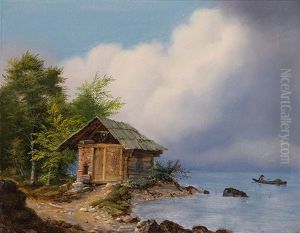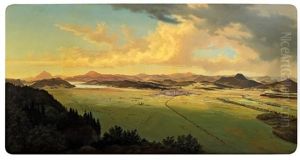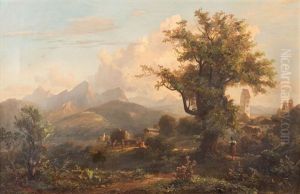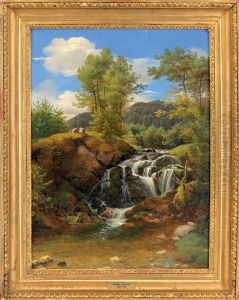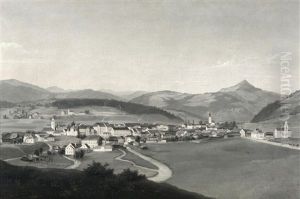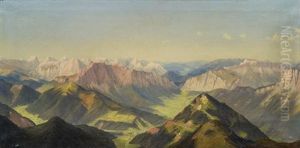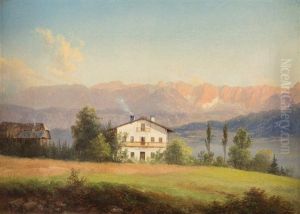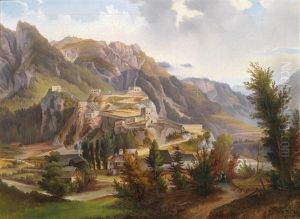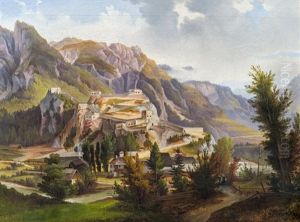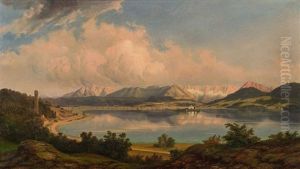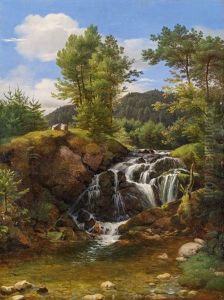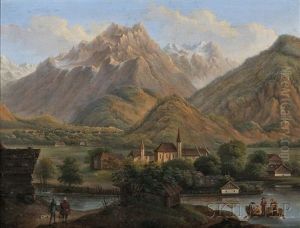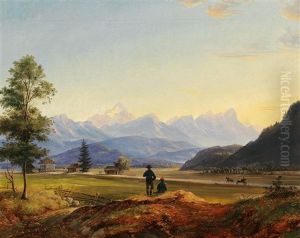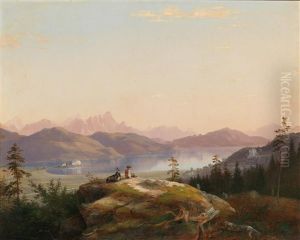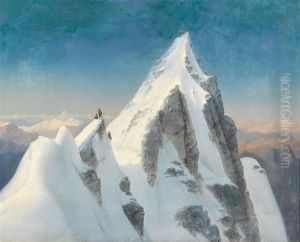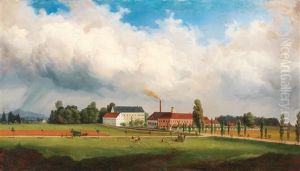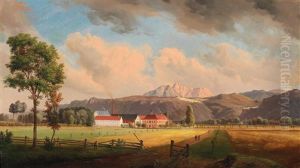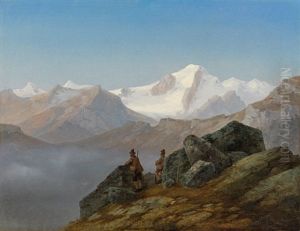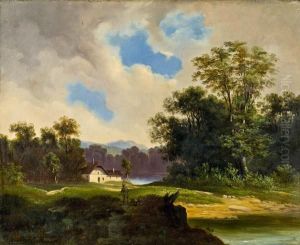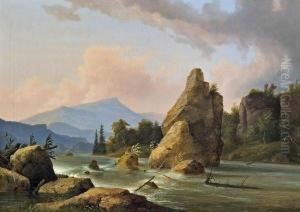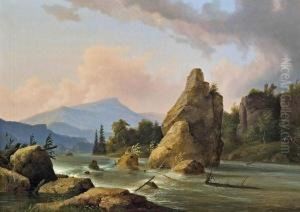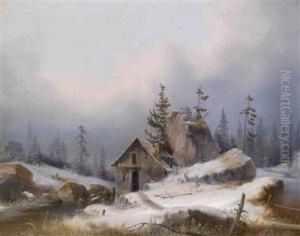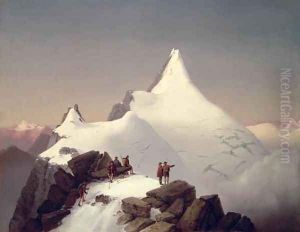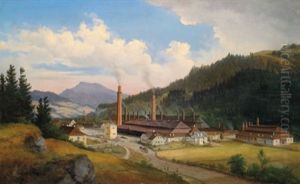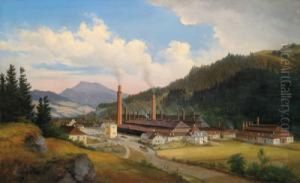Marcus Pernhart Paintings
Marcus Pernhart, born in Klagenfurt, Austria, in 1824, was a pivotal figure in the landscape painting scene of the 19th century. His body of work, primarily focusing on the natural beauty of the Carinthian and Slovenian landscapes, marks him as a prominent artist of his time, despite not always being widely recognized in the broader European art history narratives. Pernhart's paintings are characterized by their meticulous detail, vibrant coloration, and the ability to capture the sublime essence of the Alpine landscapes.
Pernhart's artistic journey began in his hometown, but his talents soon took him across various parts of Europe, where he honed his skills and developed his unique style. Although he was influenced by the Romantic movement, which was prevalent during his time, Pernhart's work stands out for its realism combined with a romantic flair, capturing the awe-inspiring beauty of nature. He was adept at using light and shadow to create depth and emotion in his landscapes, a technique that endeared his works to both critics and the public.
Despite facing personal and financial struggles throughout his life, Pernhart remained dedicated to his art. He traveled extensively in the Alps, often on foot, to find the perfect vistas to paint. His dedication to capturing the natural beauty of the Alpine region was unmatched, making him one of the first artists to document many areas of the Austro-Hungarian Empire's mountainous landscapes. Pernhart's work was not just limited to landscapes; he also produced a number of cityscapes and architectural paintings, showcasing his versatility as an artist.
Marcus Pernhart's contributions to the art world were recognized in his later years, and he became a respected figure among his contemporaries. However, his death in 1871 marked the end of an era for the Carinthian school of painting. Today, Pernhart's paintings are held in high regard, especially within Austria and Slovenia, where they are seen as valuable cultural heritage. His work continues to inspire artists and art lovers alike, serving as a testament to the enduring beauty of the Alpine landscape and the talent of those who seek to capture it.
